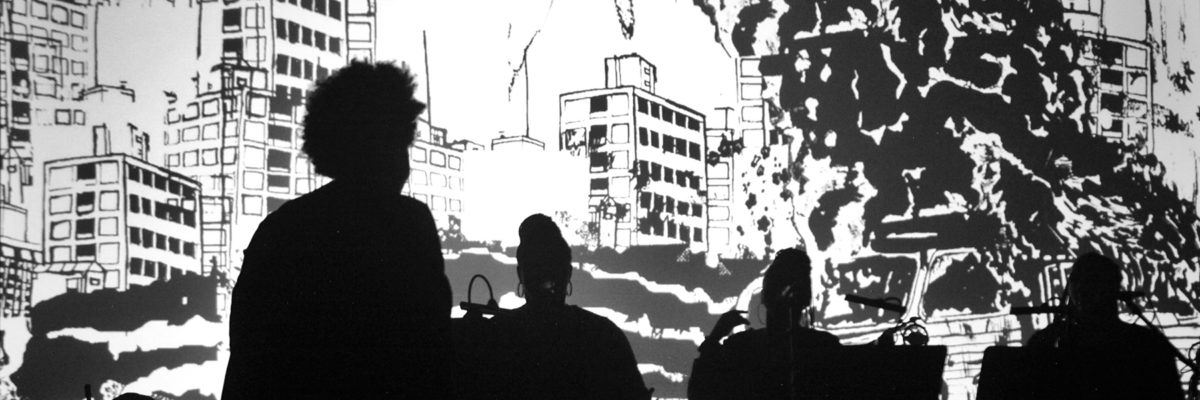Damon Locks Black Monument Ensemble is a Chicago group led by visual artist, educator, and musician Damon Locks. Bringing together singers, jazz improvisors, and dancers, Black Monument Ensemble is a considerable presentation, with as many as 18 people sharing a stage, a song. Their records are dense, persuasive declarations, focused on illumination, refusing daydream, and revealing new visions and harmonies with every listen.
The sound of Black Monument Ensemble, built from the different backgrounds of the members, is deeply welcoming and simultaneously unconcerned with genre. There are entry points for jazz lovers, for people who adore gospel, for hip hop fans and punks. Locks proudly notes that in April 2021, the Black Monument Ensemble LP NOW was included in Bandcamp’s “Best Jazz” and “Best Punk” lists. This abundance reflects the experiences of the band members, which crisscross devotional music, African dance, the Chicago Jazz Ensemble, Blues, no wave, and beyond. This exploration is perhaps best personified by Damon Locks himself, whose 35-year musical career spans from the dynamic punk of Trenchmouth to the roaming clash of The Eternals, to the avant garde ensemble work of Rob Mazurek’s Exploding Star Orchestra.
Top Stories was a small press dedicated to radical forms of writing. Founded by Anne Turyn in 1978 when her longtime interest in non-traditional storytelling uncovered the inability and unwillingness of traditional publishers to support the growing number of artists working to push these boundaries. Over the next 13 years, Top Stories became an unparalleled venue for experimental writing, publishing small books by novelists, conceptual artists, filmmakers, and musicians. Included among its visionary participants were Kathy Acker, Laurie Anderson, Constance DeJong, Jenny Holzer, and Cookie Mueller.
A reflection of the restless language contained within each issue, Top Stories offered complete creative freedom to the participating artists. As explained by Turyn in 2018, “I’d print anything so long as their submission/piece fit in the 5×8” format, and the back covers were consistent.” This included shorter pieces, which would otherwise vanish into anthologies or journals; experiments in word and image; and texts drawn from larger bodies of work, performance scores or installations. Turyn created a flexible, inexpensive format for publishing these cutting-edge works. Each issue of Top Stories was printed in black and white, with a stapled spine, in lengths ranging from 16 to 80 pages. They sold for as little as a dollar each, and never more than $6. They weren’t quite books and they weren’t quite pamphlets, but this in-between format manifested an intimate, direct relationship between text and reader that has sustained a steadfast fascination with Top Stories for more than three decades.
Explore
